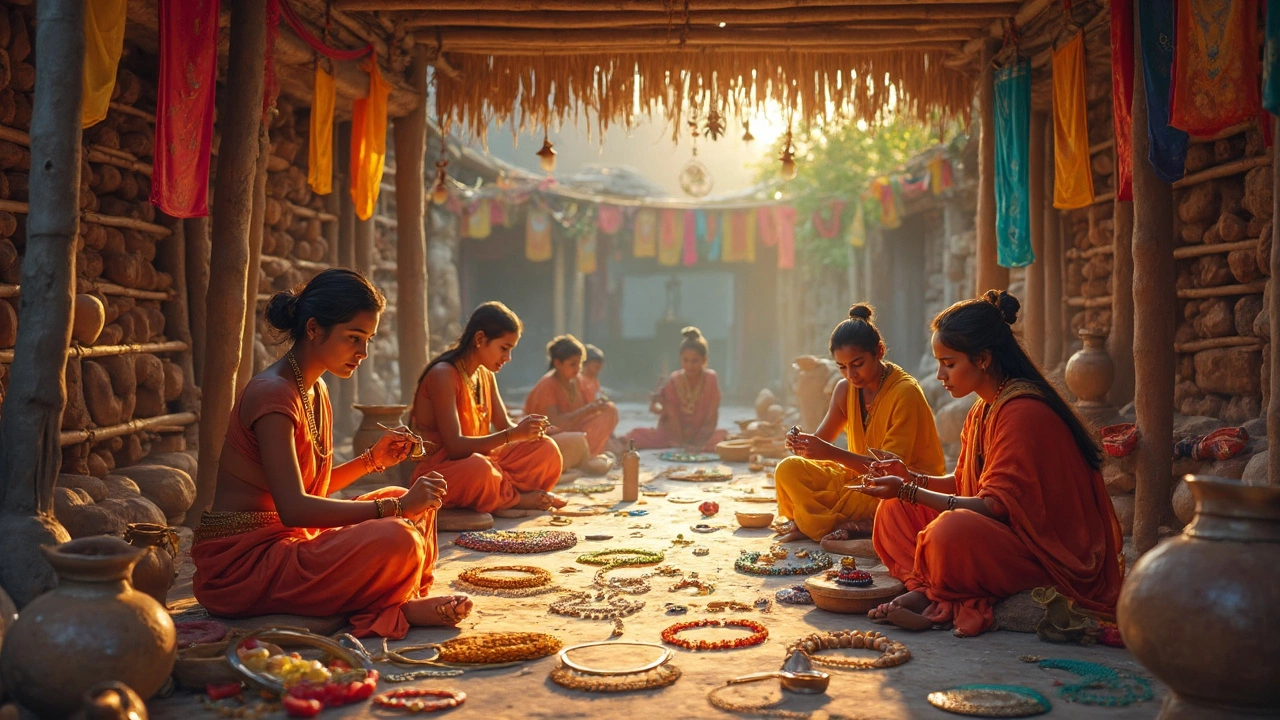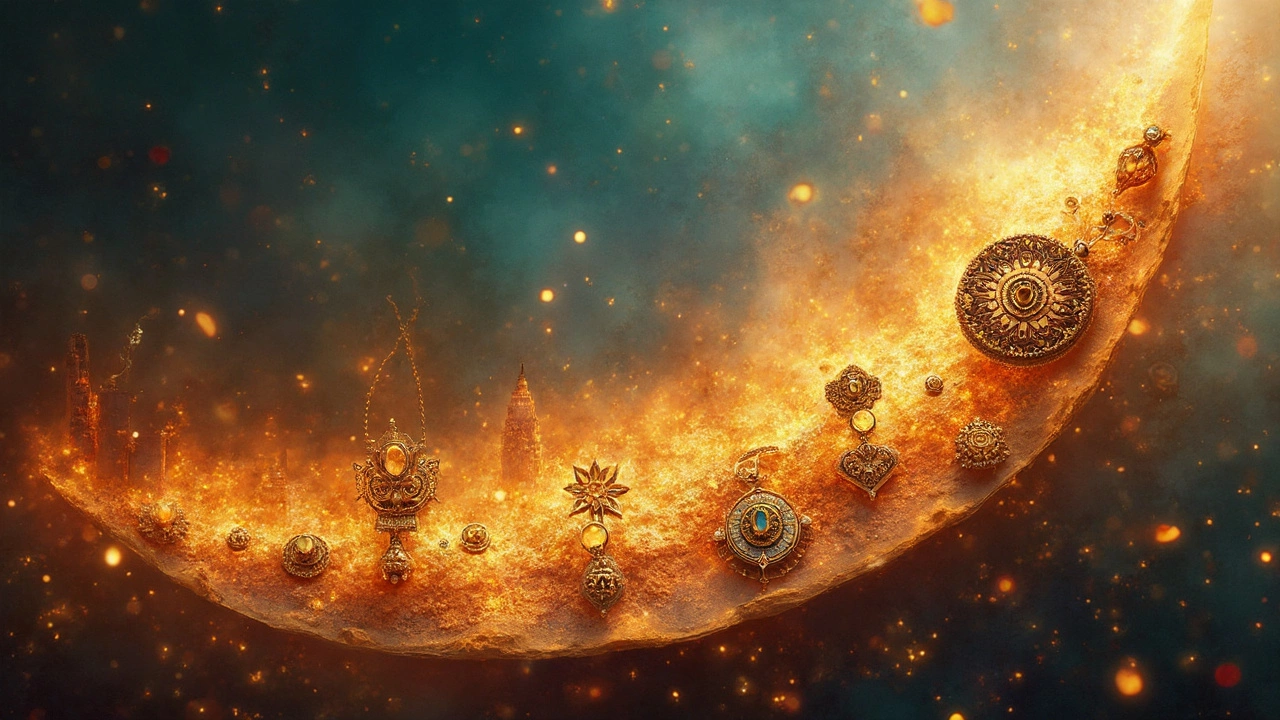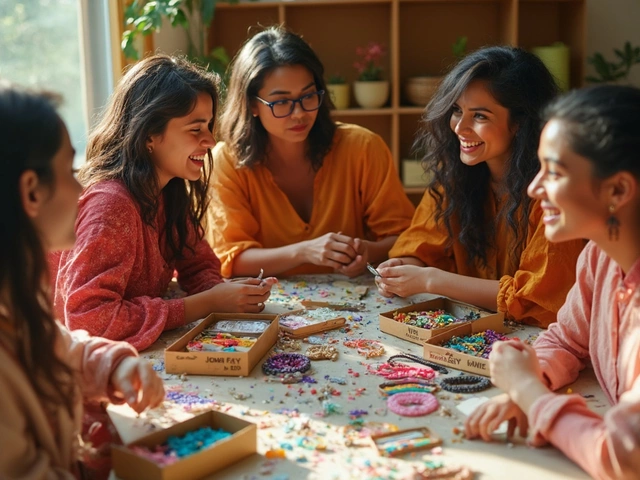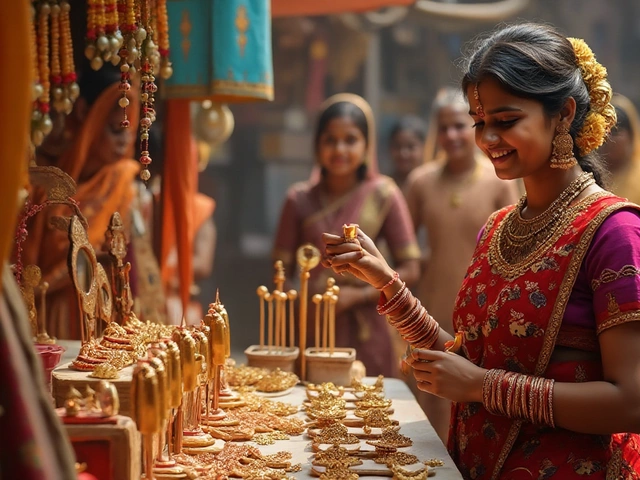
When we think about jewelry, most of us picture shiny things like gold rings or sparkling diamond necklaces. But did you know the oldest known piece of jewelry is over 100,000 years old? Let's unravel the mystery of this ancient artifact and see what it tells us about the past.
Archaeologists found perforated sea shells in a cave in Morocco, dating back to a time when humans were just starting to express their creativity through adornments. These shells, worn as beads, speak volumes about early human ingenuity and their desire to embellish themselves, even with the simplest materials.
It's fascinating how these ancient beads were made and used. They weren't just pretty trinkets; they served a purpose, possibly signaling social status or even being part of early trade systems. Imagine trying to craft something delicate without the tools we have today—impressive, right?
- The Discovery of the Oldest Piece
- Materials and Craftsmanship
- Cultural Significance
- Evolution of Jewelry Design
- Tips for Collectors and Enthusiasts
The Discovery of the Oldest Piece
Picture this: you're an archaeologist digging in a Moroccan cave and you stumble upon some tiny, perforated shell beads. It's not just any find; you've uncovered what might be the oldest jewelry known to humankind, dating back around 100,000 years! These sea shells weren't merely lying around — they had tiny, deliberate holes, suggesting they were strung to be worn as jewelry.
How Were They Dated?
So how do we know how old these things are? Scientists used a method called radiocarbon dating, which can measure the age of organic materials. In this case, they analyzed the sediment layers around the beads to lock in their age. Sounds like something from a detective novel, right?
Significance of the Discovery
Finding these beads wasn't just about their age; it reshaped our understanding of how early humans lived. These weren't just random remnants. They hinted at complex behaviors, like personal expression and even early trade among communities. Imagine using something as simple as a shell to communicate who you are or to barter for goods.
Such discoveries highlight the role of antique jewellery designs in history, showing how even our ancestors had a knack for style and self-expression.
Materials and Craftsmanship
What were people making jewelry with 100,000 years ago? Forget gold and diamonds; back then, it was all about what's available around you. The oldest jewelry pieces were made from perforated sea shells. People hung these on strings to create simple yet meaningful adornments.
Resourceful Uses of Environment
Seashells weren't just picked for their shine. They were common in coastal regions, making them the go-to material. Crafting these shells into beads shows remarkable ingenuity. Imagine someone without modern tools figuring out how to puncture a tiny hole in a shell without breaking it!
"The artisans of ancient times demonstrated a keen eye for design and practicality." — Sarah Novak, Archaeologist
Tools of the Trade
Without drills, early humans likely used bones or hard stones to craft these little pieces. It was a slow process, but the end result was something worth the effort. It's a testament to their dedication to create something beautiful from the tools nature offered.
Fun Facts about Ancient Jewelry
- Some of the oldest shells were found in the Blombos Cave of South Africa.
- These shells were likely part of early trade routes, swapped between communities.
- Craftsmanship evolved over time, gradually incorporating more complex designs and materials.

Cultural Significance
So, what does a bunch of old shells tell us about ancient humans? Quite a lot, actually! These oldest jewelry pieces are more than just relics; they're a window into the social world of our prehistoric ancestors. Wearing these beads wasn't just about looking cool. They likely played a big role in signaling identity, status, or group affiliation. Think of them as the ancient equivalent of a VIP badge or a trendy brand logo.
Adornment and Identity
Back in the day, these antique jewellery designs were probably used to convey social messages. The beads might've been a way to show off one's status or role within a group. If you saw someone decked out in these shells, you'd know they were somebody important—or at least wanted to be! It shows how people have always had this desire to stand out or belong in some way.
Cultural Connections
These ancient adornments also highlight early trade and cultural connections. Since these beads were made from sea shells but found far from the coast, it suggests they passed through trade networks. This early history of jewelry not only demonstrates technological innovation but also hints at long-distance interactions between communities. Cool, right?
Evolutionary Impact
Believe it or not, these bits of shell might have influenced the evolution of human society. By allowing individuals to express themselves, they paved the way for more complex social structures. As the saying goes, "clothes (or jewelry) make the man," and in this case, they helped make early human culture what it is today.
Evolution of Jewelry Design
Jewelry has come a long way since those early antique jewellery designs like shell beads. From simple to sophisticated, the journey of how humankind invented and reinvented jewelry is pretty epic.
The Ancient Sparkle
Our ancestors' creativity sparked more advancements. Around 4,000 BC, Mesopotamians started crafting jewelry using gold, silver, and gems. This era introduced us to intricate pieces shaped like leaves and spirals. Egyptians soon followed with bold designs featuring stones like lapis lazuli in elaborate necklaces and bracelets. An Egyptologist once said,
"Egyptian jewelry was about pizzazz. They combined style with storytelling in every piece.”Can you imagine the pharaohs blinged out like that?
Medieval to Renaissance
Fast forward to the medieval times, and you'll see how the art took a religious and status-driven turn. Jewelry became more about showcasing wealth and allegiance. Personal talismans became regular neck attire, and by the Renaissance, even more colorful stones entered the scene. They're the pioneers who made jewelry functional and political.
Modern Magic
Today, ancient adornments still influence modern designers. Technology shook things up big time. Modern-day 3D printing allows for more precise and innovative designs, while sustainable practices urge creators to be eco-friendly.
Take a look at this quick table of key eras defining jewelry design:
| Era | Characteristics |
|---|---|
| Ancient | Natural materials, basic forms |
| Medieval | Religious motifs, ornate detailing |
| Renaissance | Vibrant colors, personalized pieces |
| Modern | Technology-influenced, sustainable |
So, next time you glance at a piece of jewelry, think of the journey it's taken to sparkle on you today. It's not just metal and stones; it's a history lesson you can wear.

Tips for Collectors and Enthusiasts
Collecting antique jewellery designs can be a rewarding hobby, but it helps to know a few things before diving in. Whether you're after the world’s oldest jewelry pieces or something from a specific era, these tips can guide you.
Research and Identify
First things first—get familiar with the history. Knowing the timelines, styles, and materials used in different eras of jewelry is key. Antique pieces often have telltale signs, like hallmark stamps or specific craftsmanship techniques that can help in identification.
Find Reliable Sources
It's important to know where to buy. Consider vintage shops, auctions, or reputable online platforms. Ensure the authenticity by requesting certificates or expert opinions when purchasing high-value items.
Preservation Practices
Once you’ve acquired a piece, keeping it in good shape is crucial. Store jewelry in a dry place and away from sunlight. Clean it gently using a soft cloth; avoid harsh chemicals that can damage fragile materials like pearls or tarnish metals.
Understanding Value
Know what makes a piece valuable—rarity, condition, and provenance are big factors. An old piece doesn’t necessarily mean high value, so context is everything. Sometimes even well-known stories behind a piece can add to its worth.
- Rarity: A common factor in assessing value.
- Condition: Better maintained, higher the value.
- Provenance: Check the history that accompanies the piece.
Networking and Learning
Join collector communities or online forums. Engaging with other enthusiasts can offer insights and tips you won't find elsewhere. Plus, these networks might sometimes give you the first look at new additions in the market.
By following these pointers, collecting ancient adornments and antique jewelry can become not just a collection, but a window into history offering stories as intricate as the designs themselves.


